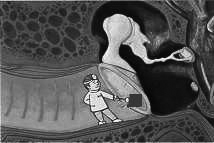Excerpts from AME Guide |
 |
Guide for Aviation Medical Examiners
Application Process for Medical Certification
Exam Techniques and Criteria for Qualification
Items 25-30. Ear, Nose, and Throat - Middle Ear
Pathology of the middle ear may be demonstrated by changes in the appearance and mobility of the tympanic membrane.
The applicant may only complain of stuffiness of the ears and/or loss of hearing. An upper respiratory infection
greatly increases the risk of aerotitis media with pain, deafness, tinnitus, and vertigo due to lessened aeration
of the middle ear from eustachian tube dysfunction.
When the applicant is taking medication for an ENT condition,
it is important that the Examiner become fully aware of the underlying pathology, present status, and the length
of time the medication has been used. If the condition is not a threat to aviation safety, the treatment consists
solely of antibiotics, and the antibiotics have been taken over a sufficient period to rule out the likelihood of
adverse side effects, the Examiner may make the certification decision. The same approach should be taken when
considering the significance of prior surgery such as myringotomy, mastoidectomy, or tympanoplasty.
Simple
perforation without associated symptoms or pathology is not disqualifying. When in doubt, the Examiner should
not hesitate to defer issuance and refer the matter to the AMCD. The services of consultant ENT specialists are
available to the FAA to help in determining the safety implications of complicated conditions.
Exam Techniques
Other Regions of Head and Neck
- Head and Neck
- External Ear
- Pathology of the Middle Ear
- Unilateral Deafness
- Bilateral Deafness
- Hearing Aids
- Nose
- Evidence of Sinus Disease
- Mouth and Throat
- Larynx
Note: Numbers correspond to the required entry in the AME portion of the FAA Form 8500-8
